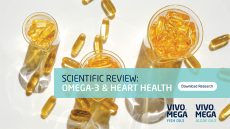Unexpected result on iron levels in infant formulations set to spark debate
formula as new study suggests extra iron may delay development in
infants that already have sufficient levels.
A large swathe of research in recent years has focused on the impact of iron-deficiency in infants; a deficiency linked with poorer cognitive development. In parallel, food makers have speared opportunities in the market for milk formulas that meet the dietary needs of infants and counter-balance deficiency needs. The European infant formula market alone is estimated to be worth about €600m. But this latest study at the University of Michigan presents a different picture for iron fortification and offers thought for a fresh approach to research in this area. "Our results for 25 years of research show problems with lack of iron. For us to find this result is a big deal, it's really unexpected," said Dr. Betsy Lozoff, University of Michigan research professor at the Center for Human Growth and Development, and the study's principal investigator. US infant formulas typically come fortified with 12 mg/L of iron to prevent iron-deficiency anaemia. Europe generally uses a lower amount; in the UK, the limit for iron in cows milk based infant formula is 1.5mg/100 kcal. In this randomized study, healthy infants without iron-deficiency anemia were given formula with either 12 mg or 2.3 mg iron from 6 to 12 months and followed to 10 years. This study on 494 Chilean children showed that those who received iron fortified formula in infancy at the 12 mg used in the US lagged behind those who received low-iron formula in cognitive and visual-motor development by age 10 years. "I thought that behavior and development would be better with the 12 mg formula," said Lozoff, also professor of pediatrics in the U-M Department of Pediatrics and Communicable Diseases at the Medical School and C.S. Mott Children's Hospital. Lozoff did stress, however, that most children who received the 12 mg formula did not show lower scores. But the five per cent of the sample with the highest haemoglobin levels at six months showed the poorest outcome, the researcher reports. Adversely affected children scored 11 points lower in IQ and 12 points lower in visual-motor integration, on average; the average overall score on both tests was 100. A similar pattern was observed for spatial memory and other visual-motor measures. Lozoff noted that not many infants in Chile had high hemoglobin levels at the time since there was no iron-fortification program for infants and that more than five per cent of US infants might have high hemoglobin levels in early infancy. The human body needs iron to make haemoglobin, a substance in red blood cells that enables them to carry oxygen. High hemoglobin generally indicates sufficient iron. According Lozoff, who claims that no such study has been conducted in the United States or elsewhere, the next step is to test the participants again at age 16. Iron deficiency occurs because babies grow so quickly they often "grow out" of the amount of iron they are born with. Breast milk is thought to contain the iron a baby needs for between four to six months, commented the Michigan-based researcher. Other important sources of iron for infants include iron-fortified infant formulas and cereals, iron drops and meat. Lozoff emphasized that further study is required and that her results must be reproduced in fresh research. "It would be premature to recommend earlier testing or to avoid supplemental iron based on the study's results," she added. The paper, "Poorer developmental outcome at 10 years with 12 mg/L iron-fortified formula in infancy," was expected to be presented May 5 at the Pediatric Academic Societies annual meeting in Honolulu. Co-authors on the study include: Marcela Castillo, Institute of Nutrition and Food Technology, University of Chile, Santiago, Chile, and Julia B. Smith, Educational Leadership, Oakland University, Michigan.













